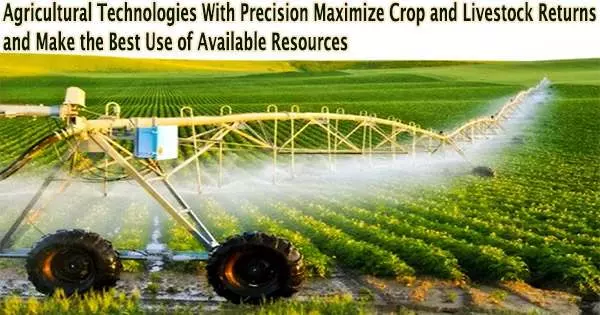Technologies for precision agriculture (PA) assist maximize agricultural and livestock returns while making the most use of available resources. According to a recent study by Tong Wang and Hailong Jin, associate professors in the Ness School of Management and Economics at South Dakota State University, many farmers, particularly those in the Upper Midwest, still see numerous impediments to implementing PA methods. The work is published in the journal Precision Agriculture.
“PA improves farming efficiency and management, but challenges prior to and following PA adoption can prevent farmers from widely using it,” Wang said. “This research aims to understand the barriers perceived by farmers at different usage stages.”
The phrase “precision agriculture” refers to a broad range of agricultural technologies that are intended to address the spatial and temporal variability of the field and enhance farming productivity.
Among many other technologies, GPS receivers, yield monitoring and mapping, drone-based remote sensing, and geographic information systems are some of the most often utilized PA instruments.
Barriers to PA adoption and more
In the summer of 2021, Wang sent out a survey to farmers in South Dakota, North Dakota, Minnesota and Nebraska. More than 1,100 corn producers responded to questions regarding their views towards potential challenges posed by PA technologies.
The results from this study convey that producers with varying experience in PA technologies have different views regarding the main challenges towards PA usage and adoption.
Professor Tong Wang
Of all respondents, 59% have adopted at least one PA technology from all three categories (georeferencing, diagnostic and application technologies), compared to 14% who have not adopted any PA technologies. Their concerns were organized into four categories: cost concerns, technology concerns, complexity concerns, and infrastructure and support concerns.
“If challenges faced by producers are not addressed, it could constrain the widespread adoption of PA technologies,” Wang said.
Cost issues, including initial investment expenses, annual software subscription prices, maintenance and operation costs, were cited by producers as the biggest barrier to the implementation of PA technology.
Of all producers, 60% felt that PA equipment and services were too high. Producers who had not used PA in any way were more likely to state that entry fees were the biggest obstacle. Costs became less of an issue for producers who were more experienced with PA tools.
The researchers proposed financial assistance in the form of agricultural loans and subsidies for new users of PA technology as a potential remedy to get around this obstacle.
For farmers experienced with PA technologies, one of the biggest concerns was brand compatibility. Data privacy is also one of the major concerns regardless of the adoption status.
Data shows that age, farm size and education all play a role in the perceived barriers to adoption.
“The results from this study convey that producers with varying experience in PA technologies have different views regarding the main challenges towards PA usage and adoption,” Wang said.
Previous research has shown the adoption of PA technologies also has public benefits. These include less fuel use, lower greenhouse gas emissions, and enhanced water quality in nearby streams as a result of effective pesticide and fertilizer use.
“Findings from this study can aid PA stakeholders in identifying target groups, tailoring future development, research and outright efforts, and ultimately promoting efficient PA usage on a broader scale,” Wang said.





![Report on Models for Nanometer Size MESFETs [ Part-1 ]](https://assignmentpoint.com/wp-content/uploads/2013/04/MESFET-110x55.jpg)










